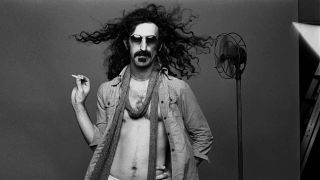THE RETURN OF THE SON OF MONSTER MAGNET The opening track from the Freak Out! (1966) album, this song was actually never finished. The reason was that Zappa’s label were concerned with the amount of money that was being spent in the studio, including a whopping $12,000 on renting percussive instruments. That’s why this piece has the subtitle ‘An Unfinished Ballet In Two Tableaux’. Oddly, when he later had the time and money available, Zappa chose not to complete the composition, but to leave it in this raw state.
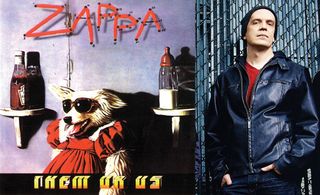
FROGS WITH DIRTY LITTLE LIPS
DEVIN TOWNSEND
Zappa is always a conundrum for me. He was brilliant beyond compare, and a genius in ways that not only could I never achieve, but also that I have a hard time even conceptualising. However – and this is a truly unpopular opinion, I’ve found – my connection on his work has also often been marred by several things.
The occasional elitist Zappa fan makes me feel like a jackass for not “being intelligent enough” to understand the music, but honestly, my musical world has always been attracted to things that hit me on a basic emotional level. I often felt like Zappa was coldly logical musically, and slightly condescending lyrically, even when he was making a brilliant point. There was an element to his music that seemed oblivious to his brilliance, as opposed to using it as a tool.
So I would say in my odd experience with Zappa, the comedic stuff worked best for me. I would think my favourite album would have been Them Or Us (1983), and I have good memories of Frogs With Dirty Little Lips – it was simply quirky in a way that I found fun. The modes and tonalities of mind-bogglingly brilliant songs like Inca Roads are astounding, but just sound so much like Los Angeles that I always gravitated to Zeppelin and Stravinsky instead.
Finally, I would almost say Zappa’s paintings were more of an influence on me than his music. His visual stuff, including film, was much more visceral to me. Recently, though, I have been revisiting his music as I have friends I respect immensely that assure me I’d love it.
INCA ROADS
From the One Size Fits All album, this song explores the concept of an alien civilisation encountering the Incas. It’s thought this was a parody of the spiritual themes prevalent on many progressive albums of the time. The lyrics get increasingly silly, mocking the whole idea of the overall storyline. This was the first time keyboard player George Duke had ever sung in the studio. Duke says he was pushed into doing the lead vocals by Zappa. The line at the end of the song, ‘On Ruth. On Ruth. That’s Ruth,’ is a reference to Ruth Underwood, who plays a prominent role throughout this song on the marimba.
MONTANA
From the album Over-Nite Sensation (1973), it’s the story of someone who goes to Montana to make a fortune from growing dental floss. But dental floss is usually taken to mean growing weed, as Montana was renowned for its hemp crop at the time. The song features Tina Turner and the Ikettes on backing vocals. Apparently, the vocal harmonies during one section of the song were so tough to get right that when Tina Turner finally nailed it, she played it to her then husband Ike Turner, who was working in the next studio. But when he heard it, all he said was, “What is this shit?”
Watermelon… is one of the most sublime and beautiful extended guitar solos ever recorded, the sound of a man totally lost in the moment and playing with heartbreaking lyricism.
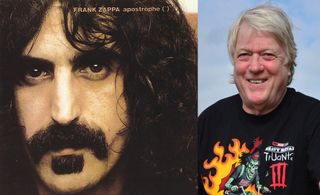
DON’T EAT THE YELLOW SNOW SUITE
ROD SMALLWOOD (IRON MAIDEN MANAGER)
Anyone who knows Zappa appreciates that he always felt words didn’t belong with music. That’s why a lot of his lyrics seem to be nonsense and so out there. And Don’t Eat The Yellow Snow Suite is gloriously ludicrous. Who else would write a song about frozen dog piss? Some of the lines in the song are bonkers, but work brilliantly. It’s a really funny song, but set against that is the sort of musicianship you’d come to expect from the man. It’s of the highest calibre, and underlines what a phenomenon he was. His guitar playing alone takes you on a journey nobody else could emulate.
I first met Frank Zappa in 1984 when I moved to LA. Some friends of mine threw a welcoming party and asked me who I’d most like to have there. Without hesitation, I said, “Frank Zappa.” These people turned out to live next door to him! So, they gave me his private phone number and told me to call him. But I was so terrified, I couldn’t bring myself to do so. A couple of weeks later, when they realised I hadn’t called, they phoned Frank and put me on to him! He invited me over to his house. I had to have a couple of large whiskies beforehand, but he was tremendous. He gave me a tour of his studio, and then we sat down for a couple of hours and chatted. We kept in touch occasionally after that. But I have never forgotten the terror I had at the mere thought of meeting him. I was such a huge fan that when he played multiple nights at Hammersmith Odeon in 1977, I bought 12 tickets in the front row for each of those gigs, for me and my mates.
My favourite Zappa period is the one that starts with the Fillmore East – June 1971 album, which for me has the greatest segue you’ll ever hear on a live record. It also takes in Over-Nite Sensation and Apostrophe (’). And it’s the last one that has the Don’t Eat The Yellow Snow Suite.
THE RETURN OF THE SON OF MONSTER MAGNET
The opening track from the Freak Out! (1966) album, this song was actually never finished. The reason was that Zappa’s label were concerned with the amount of money that was being spent in the studio, including a whopping $12,000 on renting percussive instruments. That’s why this piece has the subtitle ‘An Unfinished Ballet In Two Tableaux’. Oddly, when he later had the time and money available, Zappa chose not to complete the composition, but to leave it in this raw state.
What I love about Zappa is that he makes people pay attention to what he’s doing. You can never take anything for granted in his world.
PEACHES EN REGALIA
From 1969’s Hot Rats, this is an instrumental that showcases the jazzy side of Zappa’s repertoire. This was also played regularly by Zappa live. There have been many different interpretations of the song title. The most common one suggests a reference to breasts. It was used as the theme tune for the 1970s BBC2 programme One Man’s Week. Danny Baker also used it as background music on his show for BBC Radio London.
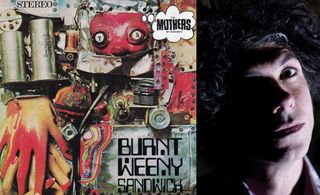
HOLIDAY IN BERLIN…
KAVUS TORABI (KNIFEWORLD)
While he could come across as entertainingly cynical in interviews and was often mean-spirited in his lyrics, Frank Zappa’s music was anything but.
Generous and beautiful, bursting with colour, at times overwhelmingly joyous and always unique, Frank was the master. While I think Get Whitey from 1993’s The Yellow Shark is perhaps the most gorgeously elegiac piece he ever wrote, it’s Holiday In Berlin, Full Blown from Burnt Weeny Sandwich (1970) that first turned me on to his universe and really encapsulates everything I love about him.
That wonderful, other‑worldly sound, the percussion, the horns, his pioneering tape experiments and extraordinary gift for arrangement all make this six-and-a-half-minute wonder sound like a souvenir from a dream.
And when that tune returns over the sped-up marching snare drums, ye gods! After my exposure to this, there was no going back.
THE GRAND WAZOO
This was also the title of an album released in 1972, when Zappa was confined to a wheelchair after being assaulted during a show in London. It’s an extended instrumental piece that takes up most of side one of the original vinyl edition. The instrumentation is very much big‑band jazz, with considerable use of woodwind. The guitar solo at the start is from Zappa himself.
Generous and beautiful, bursting with colour, at times overwhelmingly joyous and always unique, Frank was the master.
MUFFIN MAN
Inspired by the nursery rhyme The Muffin Man, this was recorded live for the1975 Bongo Fury album and features Captain Beefheart. It starts with a spoken-word piece, delivered by Zappa. This part, though, was done in the studio. Zappa named his studio the Utility Muffin Research Kitchen after this song. Live, Muffin Man usually segued with Camarillo Brillo.
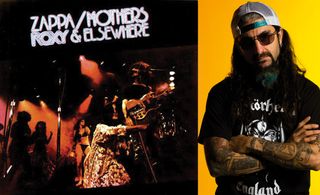
ECHIDNA’S ARF (OF YOU)
MIKE PORTNOY
Wow, picking just one Zappa tune is absolutely impossible as his body of work is so massive and diverse. For sheer technical musicality, I’ll go with Echidna’s Arf (Of You) from Roxy & Elsewhere (1974). For his crazy satirical lyrical content, I’ll go for Broken Hearts Are For Assholes from Sheik Yerbouti. And for a great combination of both, I’ll go with Keep It Greasy from Joe’s Garage.
G-SPOT TORNADO
Featured on the 1986 album_ Jazz From Hell_, the title of this track was the reason why the album, which was wholly instrumental, was given a parental advisory sticker. The sexual connotation was thought to be deserving of such a warning. Zappa never thought humans could actually play this piece as originally envisioned, which is why it was done on a Synclavier. However, the Ensemble Modern successfully proved him wrong by playing it live on his Yellow Shark tour.
It’s a rare opportunity to hear Frank in Debussy mode, with a gorgeous chromatic harmony that catches him in an introspective and impressionistic moment.
DROWNING WITCH
From 1982’s Ship Arriving Too Late To Save A Drowning Witch album. In typical Zappa style, it references both The Rite Of Spring by Igor Stravinsky and the theme to the Dragnet TV series. This was a live instrumental, but not taken from one performance. Zappa claimed the band never played it right all the way through, so he spliced together what’s on the album from various nights. Zappa himself admitted that it was a huge challenge to play properly all the way through.

JAZZ DISCHARGE PARTY HATS
MARCO MINNEMANN
How do you choose just one Frank Zappa song? It’s impossible. So, the only way I can meet this challenge is to think of what I’d play to someone who had never heard a Zappa song before, and I’d go for two choices.
The first is The Jazz Discharge Party Hats. This is an improvisational piece, with Zappa onstage telling a story, and when I first heard this it blew me away. Not only is Zappa absolutely riveting in the way he relates the story, but the music that swirls around is amazing. This is progressive in that it’s indefinable. Anything seems possible.
The second piece is the whole of the second side of the album Ship Arriving Too Late To Save A Drowning Witch. There’s just so much going on, and so many different musical styles are fused together, running into each other. You get the reggae/calypso moment, followed by a Frank Sinatra feel, which then shifts into an orchestral mood. So much happens that every time you play this, you’ll hear something new. And the lyrics tell a brilliant story as well.
What I love about Zappa is that he makes people pay attention to what he’s doing. You can never take anything for granted in his world.
JOE’S GARAGE
From 1979’s Joe’s Garage Act 1, this song tells the story of Joe, Larry Fanoga and their bandmates, who spend time in the garage playing the same song over and over. The band eventually get a record deal, but inexplicably break up before they can release anything. This was Zappa standing up against censorship and also against record company abuse.
Zappa’s guitar playing alone takes you on a journey nobody else could emulate.
IN-A-GADDA-STRAVINSKY
From 1988’s Guitar album, it references both Stravinsky, one of Zappa’s principal influences, and also the classic Iron Butterfly anthem In-A-Gadda-Da-Vida. During the piece, bassist Scott Thunes plays a sequence from the latter, while Zappa himself references _The Rite Of Spring _from the former. Thunes also includes a line from Taps, a mournful lullaby usually played at dusk on the bugle or trumpet, especially at US military funerals.
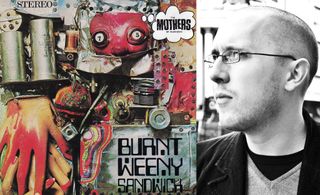
THE LITTLE HOUSE I USED TO LIVE IN
MATT BABER (SANGUINE HUM)
The album Burnt Weeny Sandwich kind of gets overlooked, coming as it does hot on the heels of the acknowledged masterpieces Uncle Meat and Hot Rats, and just before Weasels Ripped My Flesh, with its famous cover.
Side two of this album is almost entirely given over to what is one of Frank’s most beautiful pieces of music – actually several different pieces bolted together. One of my favourite few minutes of Frank Zappa composition ever would be the opening section for solo piano as performed by Ian Underwood, and this officially carries the title The Little House I Used to Live In. It’s a rare opportunity to hear Frank in Debussy mode, with a gorgeous chromatic harmony that catches him in an introspective and impressionistic moment seldom heard anywhere else in his vast output.
The part where the band kick in was originally called The Return Of The Hunch-Back Duke – a classic performance by the early Mothers, also featuring an exhilarating violin solo from Don ‘Sugarcane’ Harris. And then as the violin solo dies away, Frank puts forth a truly stunning piece of orchestration for wind, trumpet, harpsichord and wah-wah electric guitar – an instrumental combination that still sounds unique to this day. It’s a magical mini-chamber piece, tucked away on an album bursting with many of Zappa’s finest pieces of writing.
ZOOT ALLURES
The title track of Zappa’s 1976 album, this is often compared to Peaches En Regalia from the Hot Rats record in the way it’s pieced together. The title itself is a variation on the French phrase ‘zut alors’, which is an exclamation of mild surprise. This song became something of a Zappa signature tune, alongside two or three others from the album, and featured heavily in the setlist for subsequent tours. It’s an instrumental, which is based on a jazz motif.
He was a genius in ways that not only could I never achieve, but also that I have a hard time even conceptualising.
WILLIE THE PIMP
From Hot Rats, it’s the only track on the album that’s not an instrumental. The quirky vocals are provided by Captain Beefheart. The album title itself actually comes from a lyric in this song, which has a blues rock foundation. The story behind the origins of this track was told in a conversation Zappa recorded in 1969. This was finally released 16 years later on the album Mystery Disc, under the title The Story Of Willie The Pimp. There have been a number of cover versions of this track, including one by former Zappa guitarist Warren Cuccurullo. Juicy Lucy and Alex Harvey have also tackled it.
THE CHROME PLATED MEGAPHONE OF DESTINY
Zappa recommended that people read the Franz Kafka story In The Penal Colony before listening to this song, which is found on the 1968 album We’re Only In It For The Money. Described as being musique concrète, it draws parallels between the story’s setting in a penal colony and insane right-wing suggestions at the time (1968) that concentration camps left over from the Second World War in California be used to ‘rehabilitate’ hippies. The song also includes some interesting audio techniques, such as the presence of sped-up laughter, which effectively splits the track in half.

WATERMELON IN EASTER HAY
STEVEN WILSON
For me, it would have to be Watermelon In Easter Hay from Joe’s Garage. A track that refutes a criticism often levelled at Zappa, that he could only do cold and cynical, Watermelon… is one of the most sublime and beautiful extended guitar solos ever recorded, the sound of a man totally lost in the moment and playing with heartbreaking lyricism.
